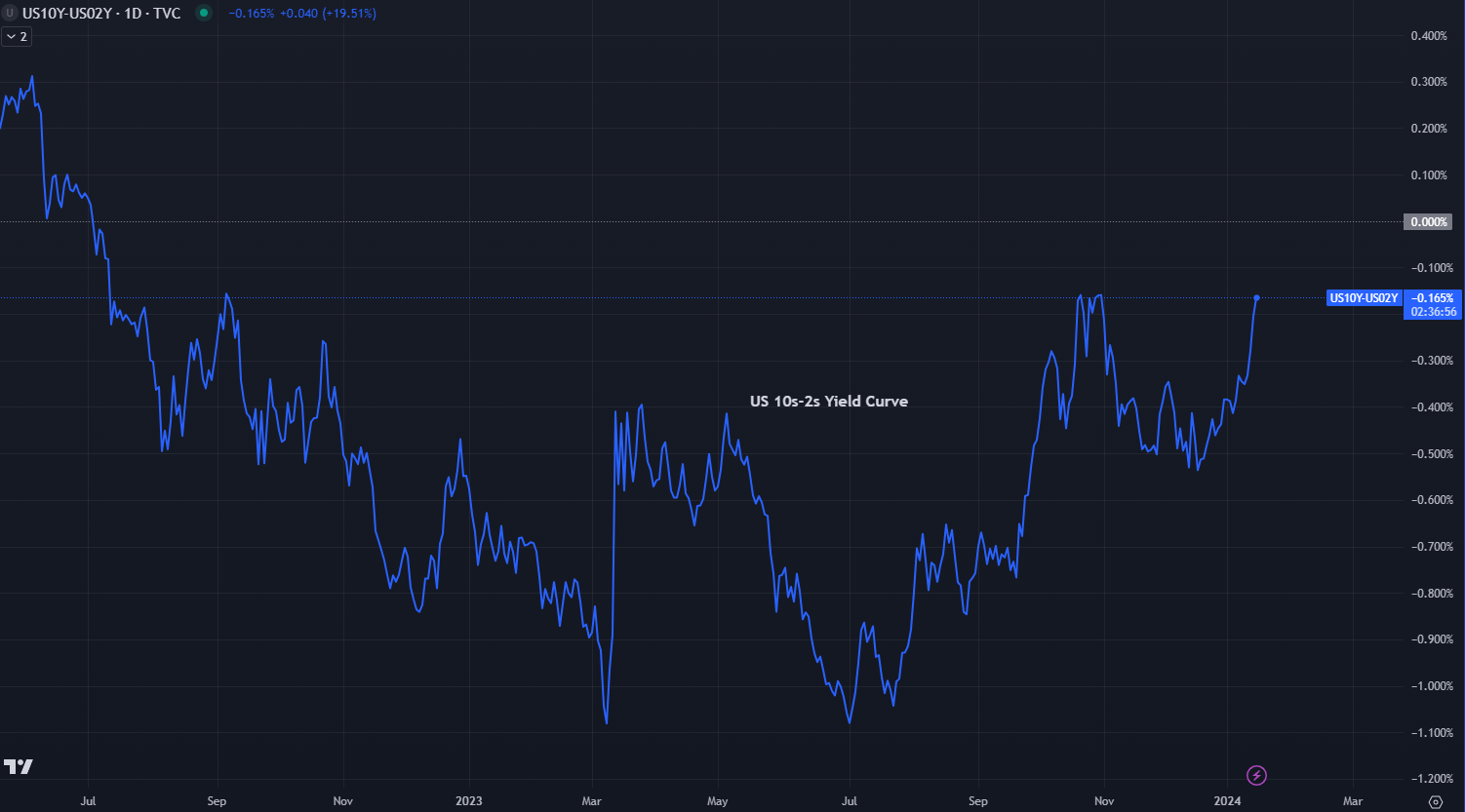- The futures market adjusts its expectations, reducing bets on a rapid rate cut by the Fed, which causes a rise in US Treasury yields in different maturities.
- Atlanta Fed President Bostic and Fed Governor Waller emphasize a measured approach to rate cuts, citing inflation risks and policy calibration.
- The U.S. Treasury yield curve's inversion deepens, a sign of potential recession concerns, as key U.S. economic data and Fed speeches loom this week.
US Treasury yields rose across the board as interest rate traders in the futures market trimmed their bets that the US Federal Reserve (Fed) would lower rates as quickly as expected . Bond yields rise around the world as Federal Reserve (Fed) central bankers push back against market participants' expectations that they would ease monetary policy even as risks of tightening have emerged. excessive.
US bond yields rise as Fed officials signal slowing of rate cuts
Over the weekend, Atlanta Fed President Raphael Bostic warned that a “second wave” of inflation could emerge if central banks lower rates too soon and warned that getting inflation closer to target The Fed's 2% target will take some time, according to the Financial Times.
Bostic added that he expects the rise in inflation to slow, adding that there were “some risks that inflation stagnates completely.”
Recently, Fed Governor Christopher Waller commented that the Fed is in no rush to ease policy as inflation is “a stone's throw away.” While he supports the idea of cutting rates, he cautioned that until any risk of resurgence of inflation has subsided, policy changes should be “carefully calibrated and not rushed.”
Following the Fed's Waller speech, fed funds futures traders expect a 65% probability of 25 basis points, down from the 76.9% forecast yesterday.
The 10-year U.S. Treasury yield rose 12 basis points to 4.07%, while the 2-year Treasury yield rose 9 basis points to 4.24%. Although the short and middle part of the curve are rising, the disengagement of the US 10-year and 2-year yield curve continued, as the spread reached its highest level since October 2023, at -0.163%. When inverted, that part of the US Treasury yield curve is often considered a warning sign of an upcoming recession.
On Wednesday, the US economic agenda will include retail sales and industrial production data, as well as Fed speeches. On Thursday, initial jobless claims and other Fed speeches will be released, followed by US consumer sentiment. the University of Michigan (UoM) on Friday.
US 10-Year – 2-Year Yield Spread Chart

Frequently asked questions about interest rates
What are interest rates?
Financial institutions charge interest rates on the loans they grant to borrowers and on the interest they pay to savers and depositors. They are influenced by base lending rates, which are set by central banks in response to changes in the economy. Central banks are typically mandated to ensure price stability, which in most cases means targeting an underlying inflation rate of around 2%.
If inflation falls below target, the central bank can cut base lending rates, with a view to stimulating credit and boosting the economy. If inflation rises substantially above 2%, the central bank usually raises interest rates to try to reduce it.
How do interest rates influence currencies?
Higher interest rates often help strengthen a country's currency by making it a more attractive place for global investors to park their money.
How do interest rates influence the price of Gold?
In general, higher interest rates influence the price of Gold because they increase the opportunity cost of holding Gold instead of investing in an interest-bearing asset or depositing cash in the bank.
If interest rates are high, the price of the US dollar (USD) usually rises, and since gold is priced in dollars, the price of gold falls.
What is the Federal Funds rate?
The Fed funds rate is the overnight rate at which U.S. banks lend to each other. This is the main rate that the Federal Reserve usually cites at its FOMC meetings. It is set in a range, for example 4.75%-5.00%, although the upper limit (in this case 5.00%) is the quoted figure.
Market expectations about the future Fed funds rate are tracked by CME's FedWatch tool, which determines the behavior of many financial markets in anticipation of the Federal Reserve's future monetary policy decisions.
Source: Fx Street
I am Joshua Winder, a senior-level journalist and editor at World Stock Market. I specialize in covering news related to the stock market and economic trends. With more than 8 years of experience in this field, I have become an expert in financial reporting.







